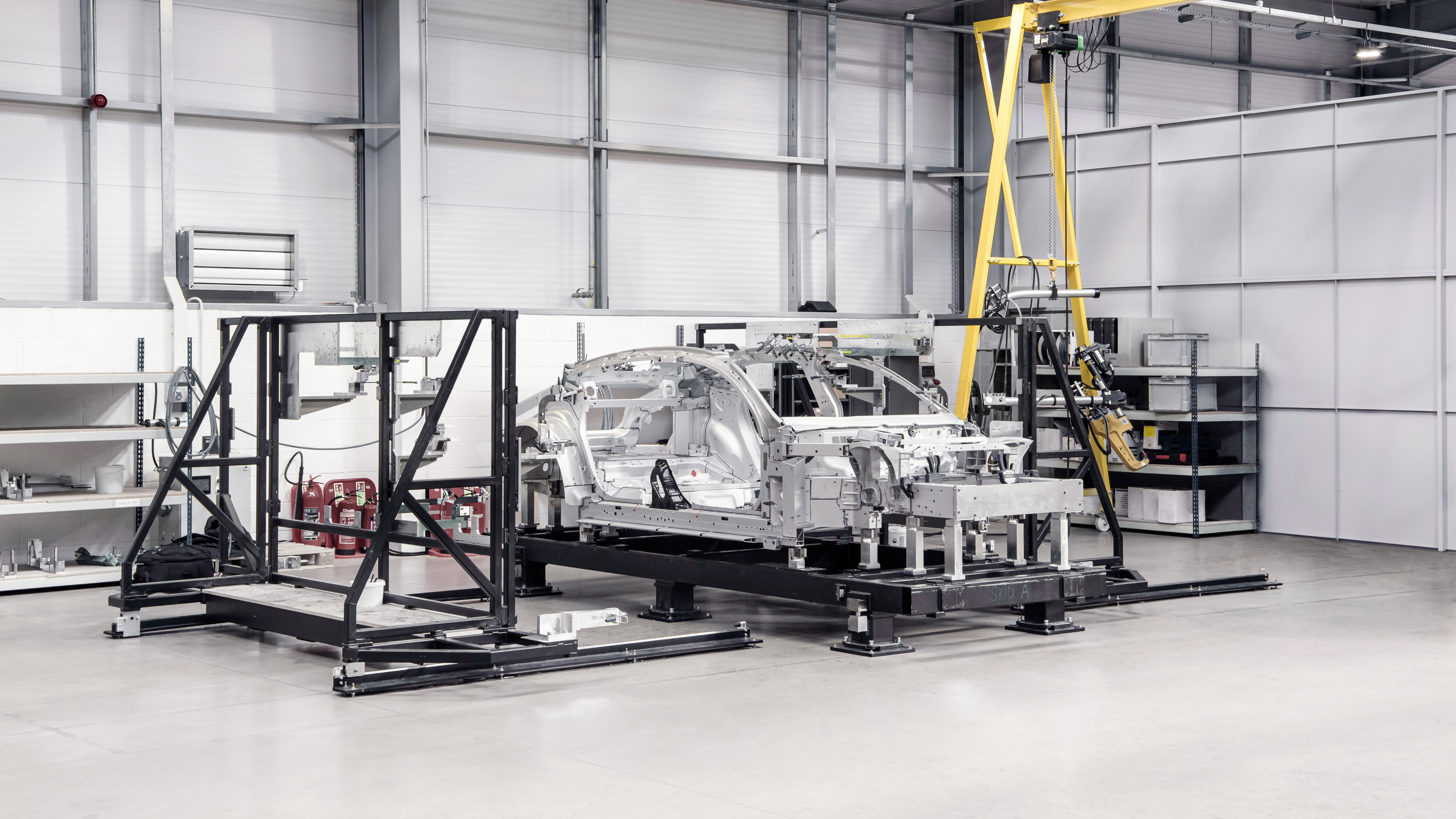Polestar 5 is being developed with a supercar-grade EV platform
New EV platform allows for better rigidity and lower weight

Polestar announced development of a new bonded aluminum platform, along with a new car that will utilize it as it looks to the next generation of its electric vehicles.
Polestar used to be the rowdy performance arm of Volvo, but the two names split a few years ago as Polestar began focusing on premium EVs. The offshoot automaker currently has two vehicles in production, with the Polestar 2 as its current flagship.
Polestar developed the new aluminum platform in-house, using its team of more than 280 engineers in Coventry, England.
Bonded aluminum construction creates a structure that is lightweight but rigid, though as Polestar admits, it's a labor-intensive and temperamental material to use in mass production.
The automaker also developed a new manufacturing process that builds the body and platform together, which creates a combination that weighs less than cars in smaller segments. The upside of all that work is that the Polestar 5 targets a level of torsional rigidity not often seen outside of supercars and dedicated sports cars.
A performance 4-door fully electric GT

The new platform will underpin the upcoming Polestar 5 - based on the Precept concept vehicle - which will be a performance 4-door fully electric GT that's likely to go head-to-head with the Audi etron GT and Porsche Taycan when it arrives in 2024.
The company believes its new platform will accelerate the pace of new vehicle development and allow it to push vehicles to market more quickly.
Sign up for breaking news, reviews, opinion, top tech deals, and more.
"We knew we wanted this car to be lightweight, we knew we wanted high quality and we knew we wanted it quickly," noted Pete Allan, Polestar's Head of UK R&D.
The concept debuted in 2020 as a sleek four-door grand touring car. The Polestar 5 will come in 2024 with a similar design and proportions.
As Polestar notes, the new dedicated EV platform allows it to create a vehicle with better rigidity and less weight overall, as well as "class-leading dynamics, rigidity, and safety features."
An EV-only platform also enables better battery placement, as the Polestar 2 shares a platform with the Volvo XC40 and C40. The architecture was designed for vehicles with internal combustion engines, so the addition of a large lithium-ion battery pack cuts into passenger and cargo space.

After working in the technology and software industry for several years, Chris began writing as a way to help people outside of that world understand the sometimes very technical work that goes on behind the scenes. With a lifelong love of all things automotive, Chris turned his attention to writing new vehicle reviews, detailing industry trends, and breaking news. Along the way, he earned an MBA with a focus on data analysis that has helped him gain a strong understanding of why the auto industry’s biggest companies make the decisions they do.